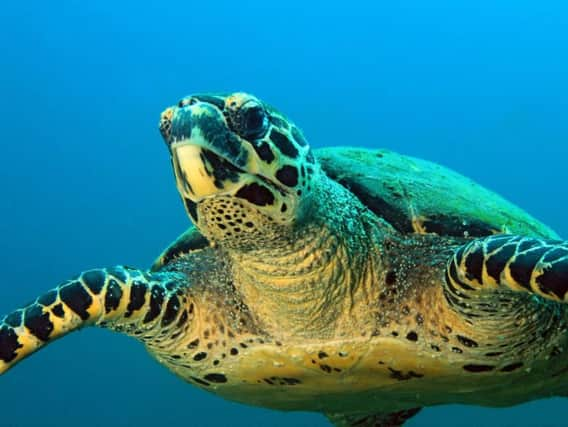Hungry green turtles fooled by plastic that looks like sea grass


The unsuspecting creatures are more likely to swallow plastics that resemble sea grass, potentially from sources like bin bags, and fragments of fishing rope and carrier bags.
They strongly favour narrow lengths of the material in natural colours like green and black, rather than debris of other shapes and colours, a study has found.
Advertisement
Hide AdAdvertisement
Hide AdAll of the turtles whose full gastrointestinal tract could be examined had swallowed plastic.
One animal was found to contain 183 pieces.
Dr Emily Duncan, of the University of Exeter, said: "Previous research has suggested leatherback turtles eat plastic that resembles their jellyfish prey, and we wanted to know whether a similar thing might be happening with green turtles.
"Sea turtles are primarily visual predators - able to choose foods by size and shape - and in this study we found strong evidence that green turtles favour plastic of certain sizes, shapes and colours.
"Compared to a baseline of plastic debris on beaches, the plastic we found in these turtles suggests they favour threads and sheets that are black, clear or green.
"The sources of this plastic might include things like black bin bags, and fragments from items such as fishing rope and carrier bags."
They say the majority of the 34 turtles examined had most likely died as a result of getting tangled in fishing nets.
Smaller turtles tended to contain more plastic, possibly because they are less experienced and therefore more likely to eat the wrong food, scientists said.
The study published in the journal Scientific Reports says this could also be because diet choices change with age and size.
Advertisement
Hide AdAdvertisement
Hide AdThe full gastrointestinal tracts of 19 turtles were examined.
While all of these turtles had ingested plastic, the number of pieces ranged from three to 183.
Professor Brendan Godley, who leads the Exeter Marine research strategy, said: "Research like this helps us understand what sea turtles are eating, and whether certain kinds of plastic are being ingested more than others.
"It's important to know what kinds of plastic might be a particular problem, as well as highlighting issues that can help motivate people to continue to work on reducing overall plastic consumption and pollution."
The research was supported by Plymouth Marine Laboratory, and funders included the Sea Life Trust and the European Union.
